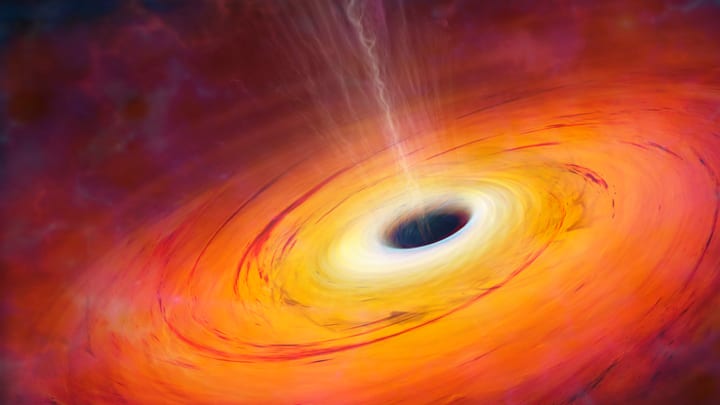In a galaxy far, far, far away, astronomers have found the oldest black hole in the universe. It sits at the center of the CAPERS-LRD-z9 galaxy, and it’s thought to have formed over 13.3 billion years ago—less than 500 million years after the Big Bang.
Birth of a Black Hole
Black holes are believed to form when massive stars collapse in on themselves at the end of their life cycles, creating concentrations of gravitational force so powerful that they swallow up everything around them, including light. Astronomers suspected their existence in the 18th century, but such theories weren’t confirmed until the 1970s, when X-ray emissions revealed stellar wind accreting around a black hole positioned 6000 to 7200 light-years away from Earth.
Researchers the University of Texas at Austin’s Cosmic Frontier Center and colleagues reported that the black hole at the center of CAPERS-LRD-z9, named after a James Webb Space Telescope program studying some of the oldest and farthest galaxies in the observable universe, was discovered in much the same way. Using spectroscopy, the astronomers were able to separate light from CAPERS-LRD-z9 into multiple wavelengths, revealing patterns unique to and therefore indicative of black holes.
“There aren’t many other things that create this signature,” Anthony Taylor, a postdoctoral researcher at the center and first author of the paper published in The Astrophysical Journal Letters, said in a statement. “And this galaxy has it!”
The Biggest Black Hole in the Universe?
Not only is this black hole old—it’s gigantic. Taylor’s team estimates that the black hole is 300 million times more massive than our own sun, with a mass equal to around half of the 100 to 400 billion stars in the Milky Way. As unfathomably big as this black hole is, it’s not the biggest—not by a long shot. That honor may go to a black hole located at the center of the Cosmic Horseshoe galaxy that early estimates suggest is a mind-boggling 36 billion times more massive than the sun.
But while the black hole at the center of CAPERS-LRD-z9 isn’t the biggest of its kind, it is the oldest. Until a future discovery lays claim to its title—the researcher say they have a couple promising candidates awaiting spectroscopic evaluation—this galaxy remains home to the most ancient body in the cosmos.
For astronomers, this black hole’s proximity to the Big Bang is equal parts puzzling and exciting. Though it casts doubt on long-established theories about how black holes are formed and how fast they grow, it provides researchers with a unique opportunity to study the infant universe.
Discover More Wild Facts About Space:
